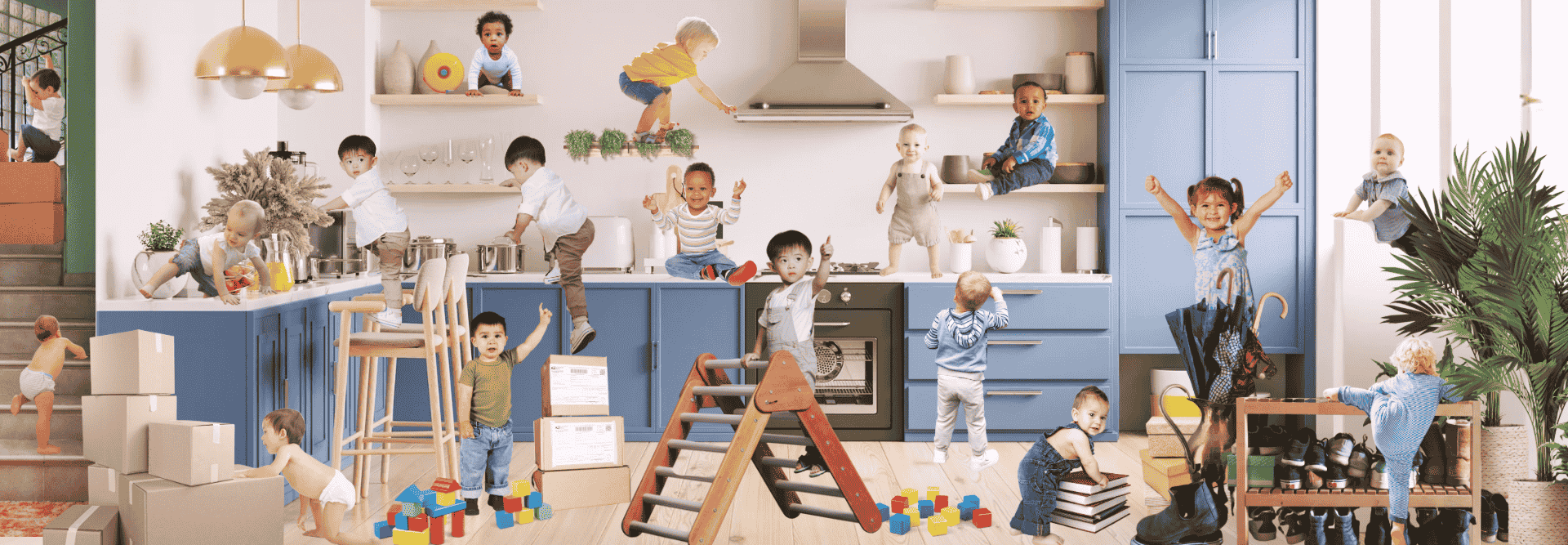My toddler climbs. Everything. She has been doing this since before she could walk. She would grab on to the outside of her stroller and pull herself up, all the strength and bravery and pride of the moment reflected in her eyes and smile as she turned to me.
It made me proud. It made me joyful. It made me curious. It made me stop in wonder. It made me terrified.
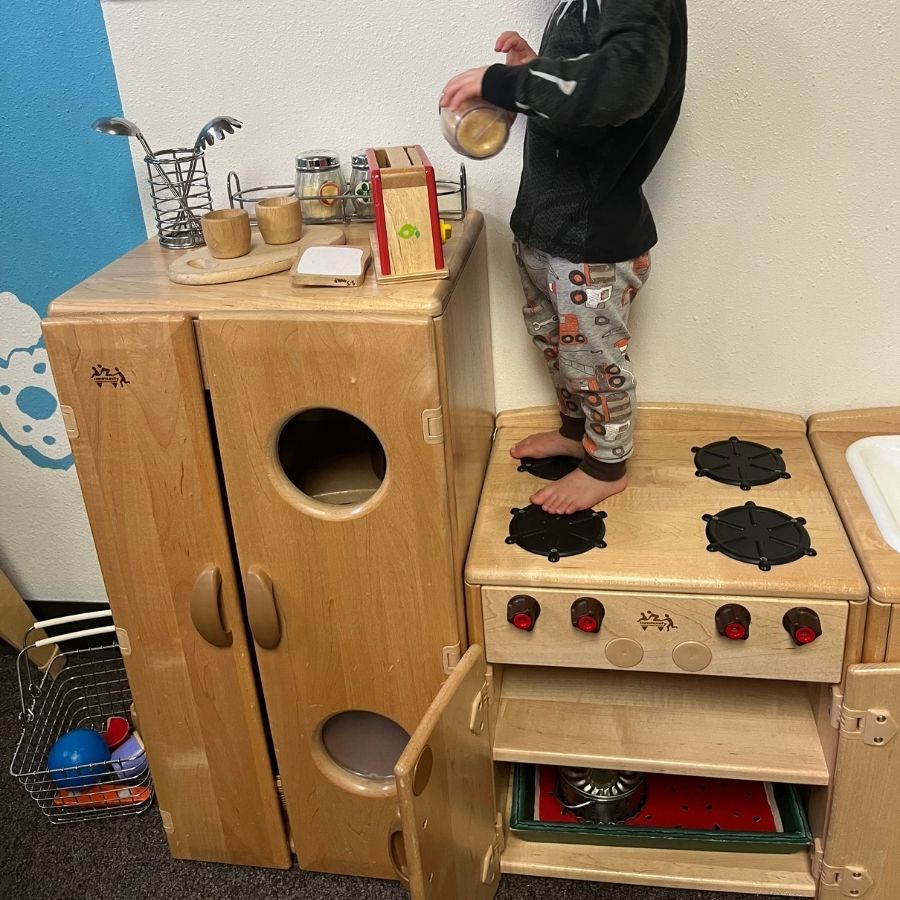
My toddler, we’ll call her N for this article, loves climbing. There are some things she should not climb, like a light shelf that is ripe for tipping over. Or, perhaps, a real piano that could be harmed by the full weight of her body on the keys. She also shouldn’t climb people who do not want to be climbed, as that’s invading their freedom and consent. But I think we often shrink the category of “things to climb” more than we need to, whether it be from fear of the unknown, or just from the binary thinking of “that’s not what that is for.”
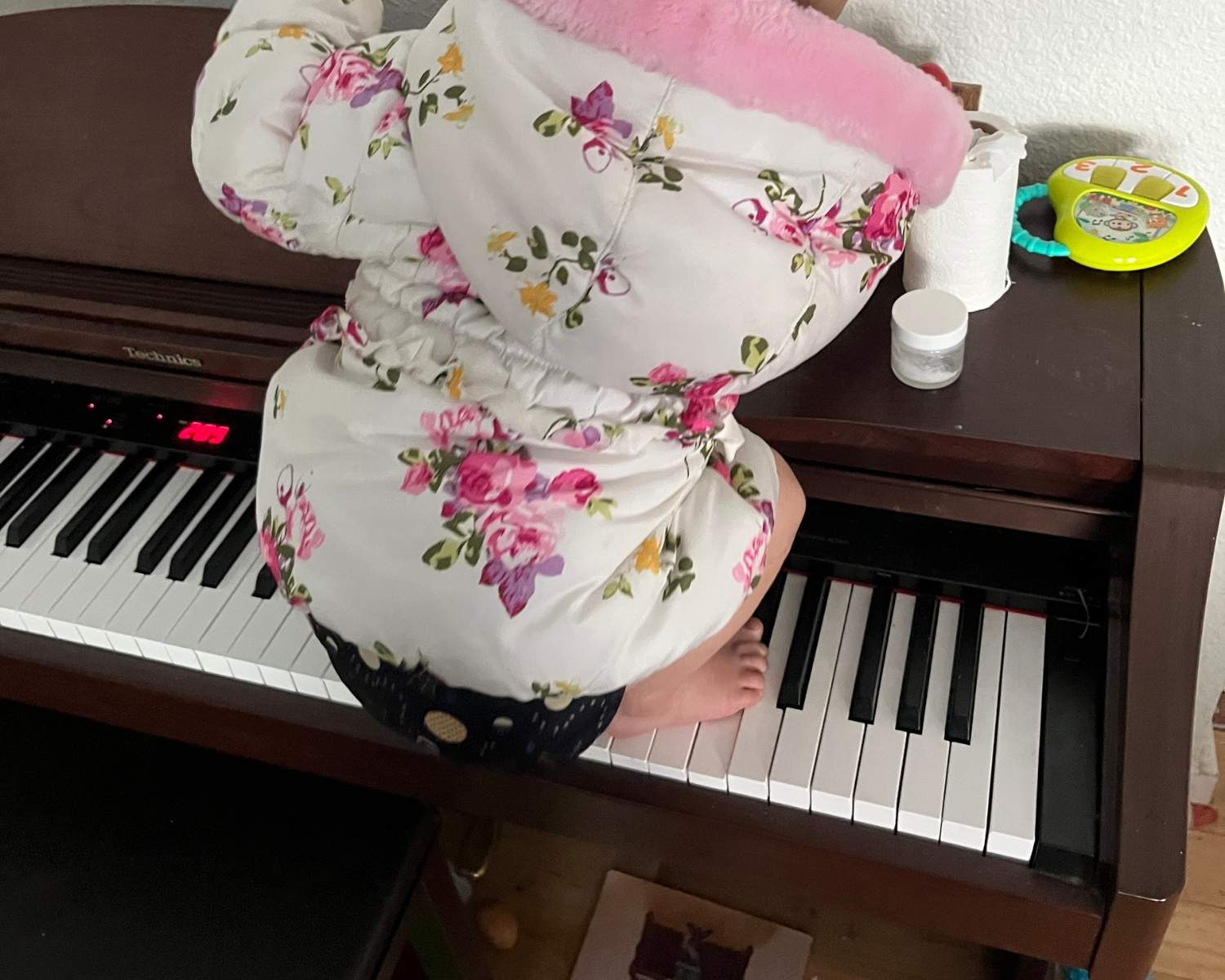
There are things that are made for toddlers to climb. There is expensive Montessori-branded furniture that we neither have room for, nor can we afford. There are indoor gyms that N is not big enough for (yet). While my toddler is an expert climber, she is rather small. I looked for these things, I thought about these things, and then I decided she already has plenty to climb here.
N muscles her way up onto stuff using only her arms. She gets up places she has no business being able to reach, but she manages anyway. I could either fight it, find those things that are for climbing, or just find the safest ways to let it happen. And usually, our fear is bigger than the actual risk. So what I assess every single day is what that risk actually is.
Risks vs. hazards: The toddler way
A risk is something that we understand is challenging or tricky. Something might happen — we could fall or get hurt — but it is a known risk that we can assess and decide to take on. For example, N’s taking a risk when she climbs a wooden ladder in the park, while knowing her body’s capability and the possibility of falling.
A hazard is a danger that we are not aware of or do not understand – for a young toddler, this could mean sticking their finger in the electrical socket, or putting their hand on a hot stove.
With a toddler, it can be more difficult to figure out what is a risk and what is a hazard. They may not yet understand fall height, or if a shelf is too light to climb without it tipping over. But they understand many things about what their bodies are and are not capable of. Especially if we let them test this out, practice, assess, and reassess.
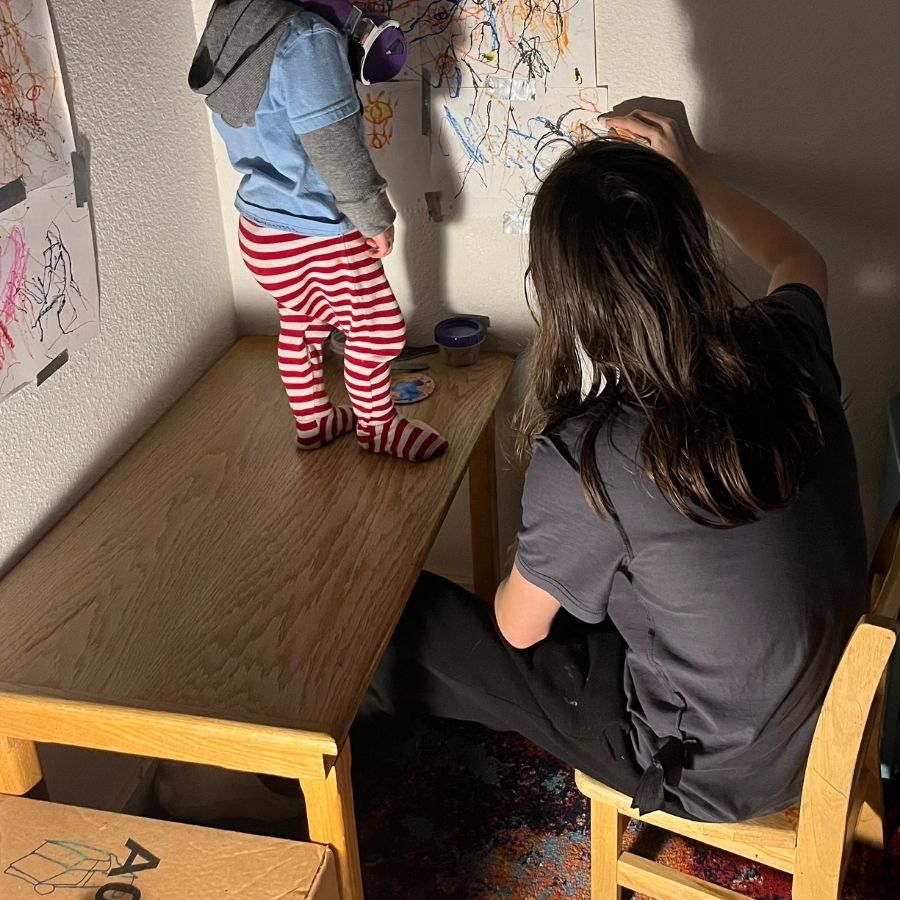
My strategy with this gray area is to let N try as much as possible while eliminating the possibly hazardous aspect of what she is doing. For example, if I am not quite sure she has the knowledge to assess if a fall height is a risk or a hazard, I will stand right near her, where I can catch her if she falls, while she climbs. I’m not always mitigating by saying no.
A few months ago, we went to Seattle and met up with friends who have a toddler slightly younger than N. We played on the playground, the three of us taking turns following the kids around and stealing moments to talk. As she has done hundreds of times before, N ran to the slide and slid down on her own. My friend, who has never seen N go down a slide, leapt to catch her. “Whoa!” he yelled. I realized it late: my friend had no idea that N is capable of going down a slide. He assessed the slide as a hazard based on his experience with his own toddler, or other toddlers he knows.
A key part of assessing risks vs. hazards is relationship. If you don’t know the child in front of you, being more cautious is valid. But the more you get to know the child, their capabilities, and their own understanding of their capabilities, the better you can properly assess risks and hazards with this particular child. Well, at least, in theory.
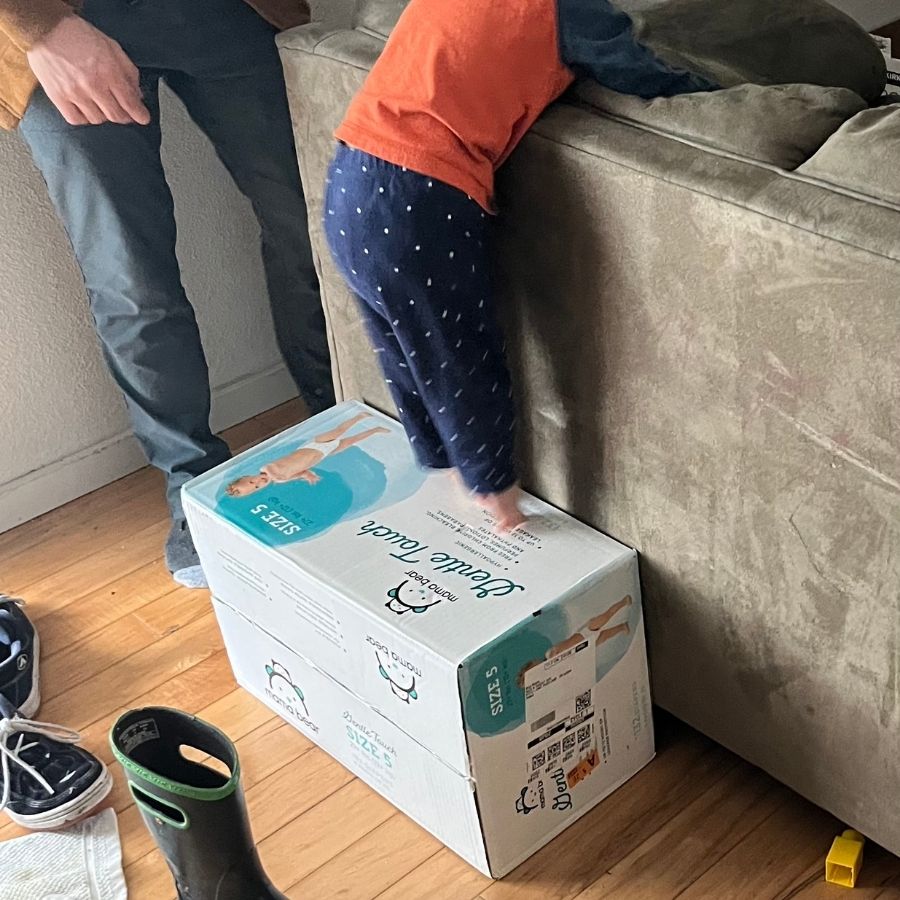
Remember when I said I was terrified when she first started climbing the stroller? That fear doesn’t just go away. It is present when she’s doing something new, risky. When she might fall (but not so high that I feel it’s hazardous and I should stop her!) or even when I’m right there next to her. I am still afraid.
Eventually, my family did get one of those things made for climbing (thanks, hand-me-downs!) — a sturdy wooden triangle ladder with a plank slide attachment. But she doesn’t use that “properly” either (I definitely should have seen that one coming).
N climbs up the slide. She stands all the way up while she walks up the angled plank. My body and mind scream, “Whyyyyy??” I stand there, witness. Sometimes my heart goes into my throat. I can feel a physical reaction whenever I fear that my toddler is about to fall or get hurt. It jumps up my chest or tightens across my belly, it sinks into my body, then just as quickly, it is gone. She almost never falls when this happens, but rather slips a bit, and catches herself.
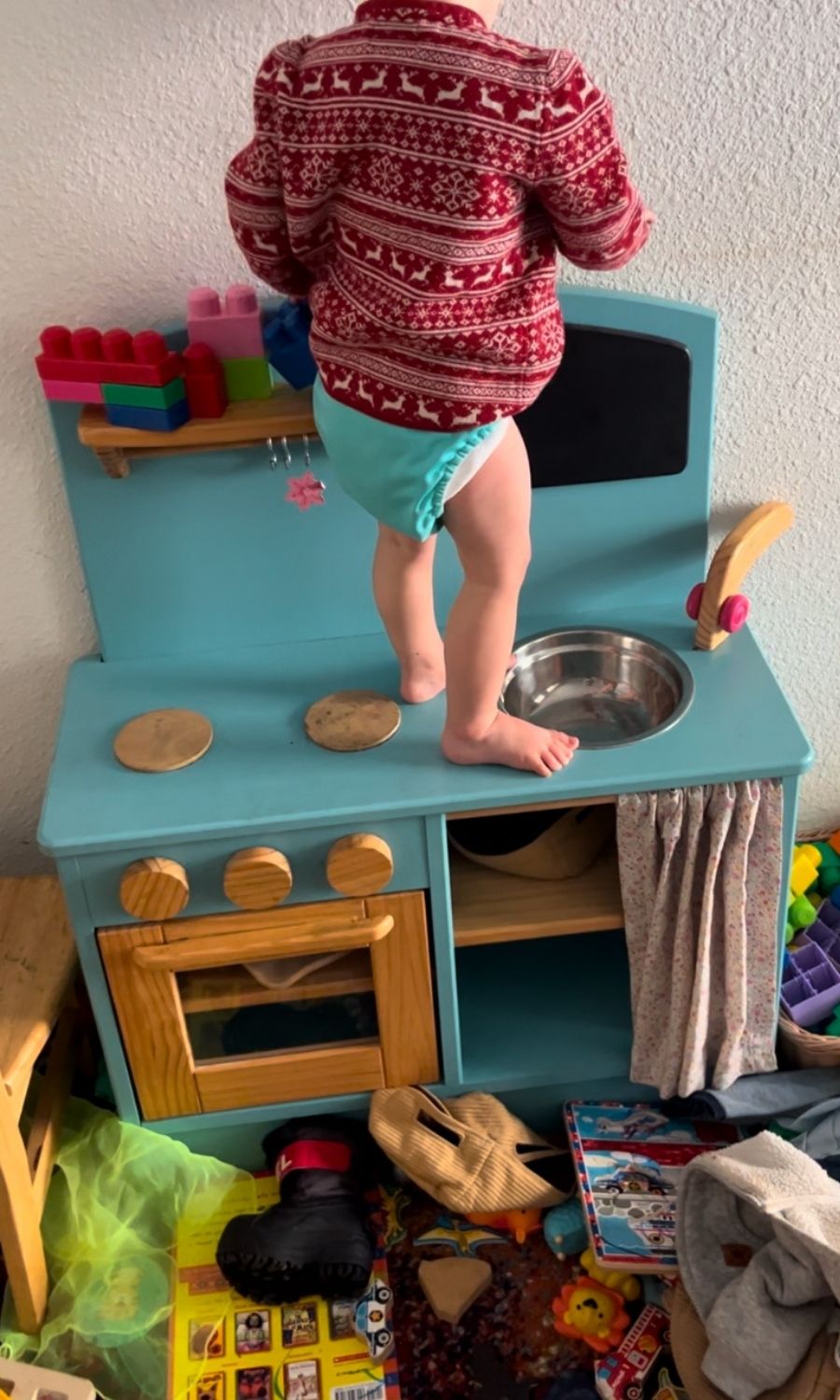
It’s enticing to tell myself that if I’m scared, I should stop her. But no, that is my fear to work through. N is assessing the risks, and for the most part she knows what her body is capable of and she’s choosing to try anyhow. If she falls, she won’t get too hurt. She is figuring out her capabilities and boundaries for herself. She will learn more of herself this way.
She may fall. She may get hurt. She will likely cry. But that’s okay. My fear is there to tell me something, for sure. Which is why I am still responsible for assessing risks and hazards, especially when she isn’t quite there with some of it yet. But I have to let my fear sit, too, and not let it control my decision making. I am letting her build those skills too. And she is having a damn good time doing it.
Read more from Bria on her Substack called Parenting Tidbits, @PartnershipParenting.
Stay Informed About The Movement
If you enjoyed this article and feel called to give back to ASDE, here are ways you can support our work:
- Donate money
- Share our content with others! Click one of the buttons above to easily share on Twitter, Facebook, or email.
- Consider becoming a Contributor for Tipping Points
Tipping Points Magazine amplifies the diverse voices within the Self-Directed Education movement. The views expressed in our content belong solely to the author(s). The Alliance for Self-Directed Education disclaims responsibility for any interpretation or application of the information provided. Engage in dialogue by reaching out to the author(s) directly.


